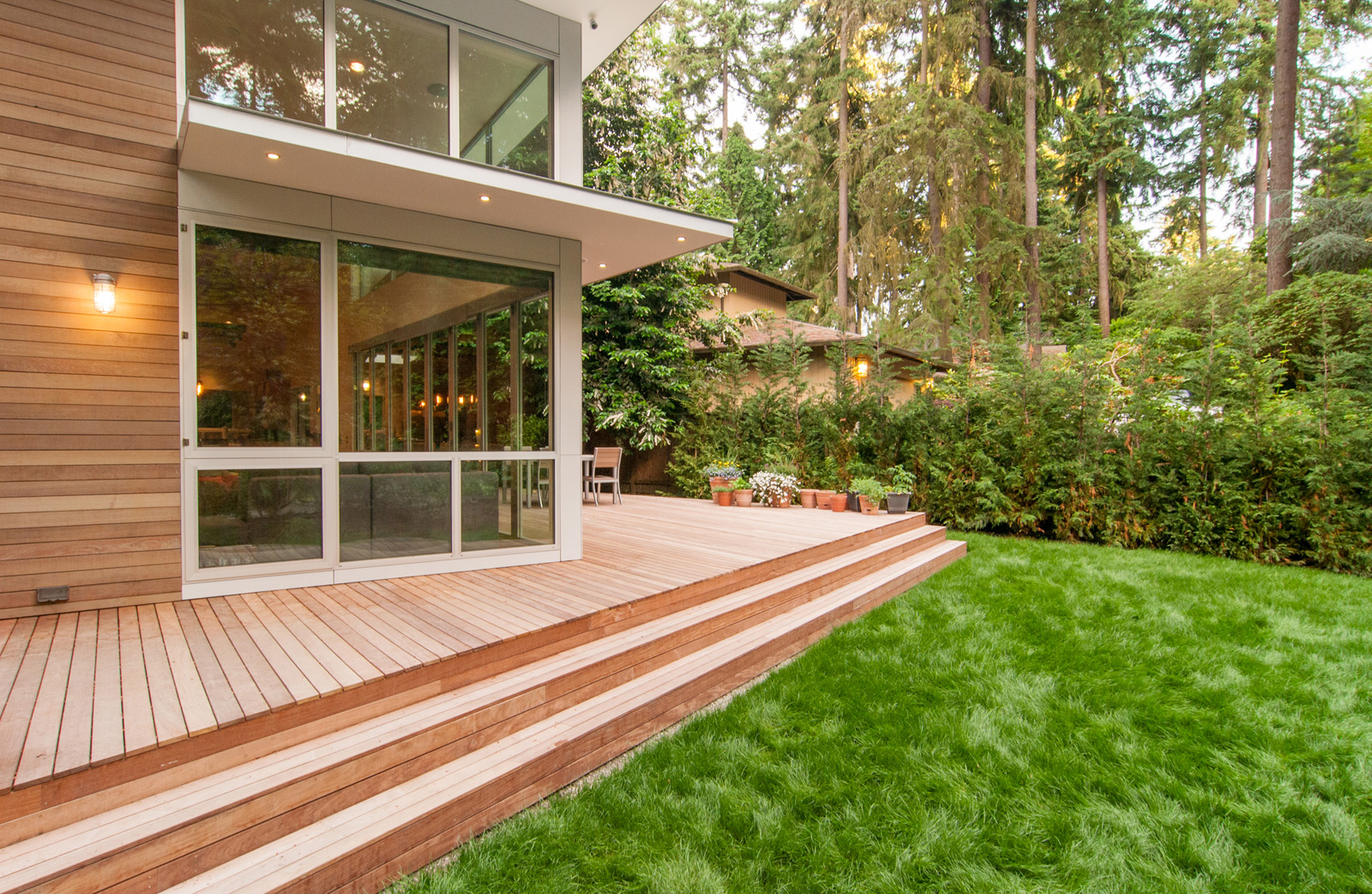
[All photos by BUILD LLC]
Like most of the United States, Washington State has introduced stringent energy code requirements in the last several years. The move to become more energy efficient and sustainable has produced building codes that necessitate higher insulation values of a structure’s envelope, thereby retaining heat more effectively and (presumably) decreasing the consumption of energy.
While we’re proponents of an improved energy code, some of these requirements have occurred rather abruptly, catching the industry off-guard and making the design equation more challenging to resolve on certain project types. Changes to the energy code at the political and jurisdictional level have occurred so swiftly, in fact, that many of the manufacturers and suppliers here in the Pacific Northwest have had difficulty keeping up with the requirements. Of all the parts, pieces, and assemblies involved with a building or residence, the changes to the energy code have most significantly impacted the requirements around window design. As an example, the once cost-effective option for aluminum windows manufactured by Milgard has been eliminated, as their windows haven’t kept up with the advancing insulation values demanded of the Washington State Energy Code.

As advocates of sustainability, responsibility, and conservation, we’re always up for a challenge that makes the world a better, longer lasting place. Over the years we’ve come up with strategies to fulfill the energy code without simply throwing more money at the issue or giving up on good design. Since windows are one of the most important variables in the energy equation, today’s post covers 5 glazing strategies for meeting the energy code on residential projects without blowing the budget or compromising the aesthetics. Keep in mind, these strategies aren’t necessarily the best or only solutions to meeting the energy code, they’re simply the answers that continue to work for our projects here at BUILD. Here goes:
1. Use the prescriptive energy code compliance method.
While there are an infinite number of methods to satisfy the energy code, most jurisdictions outline a prescriptive path to meet the requirements. For instance, the Washington State Energy Code prescribes a required window insulation value for an unlimited area of glazing in the house (if you want to get into the nuts and bolts, this u-value is 0.30). This puts boundaries on what can and cannot be done with the insulation values of the glass, walls, roof, etc. While this may seem limiting, we think of it as disciplined and predictable. Once the process diverges from the prescriptive path, a perplexing number of options are on the table involving poorer window insulation values traded out for better values at other components of the house. The prescriptive compliance rules out all of the time consuming (read: expensive) exploration and keeps the design equation on a simple path. A prescriptive method still allows plenty of opportunity for innovation and good design, it also allows big floor to ceiling expanses of glass (a necessity in the overcast Pacific Northwest). Exceptional design can still be obtained using the prescriptive path, at the same time it keeps the design fees in check and eliminates the need for specialized energy consultants.
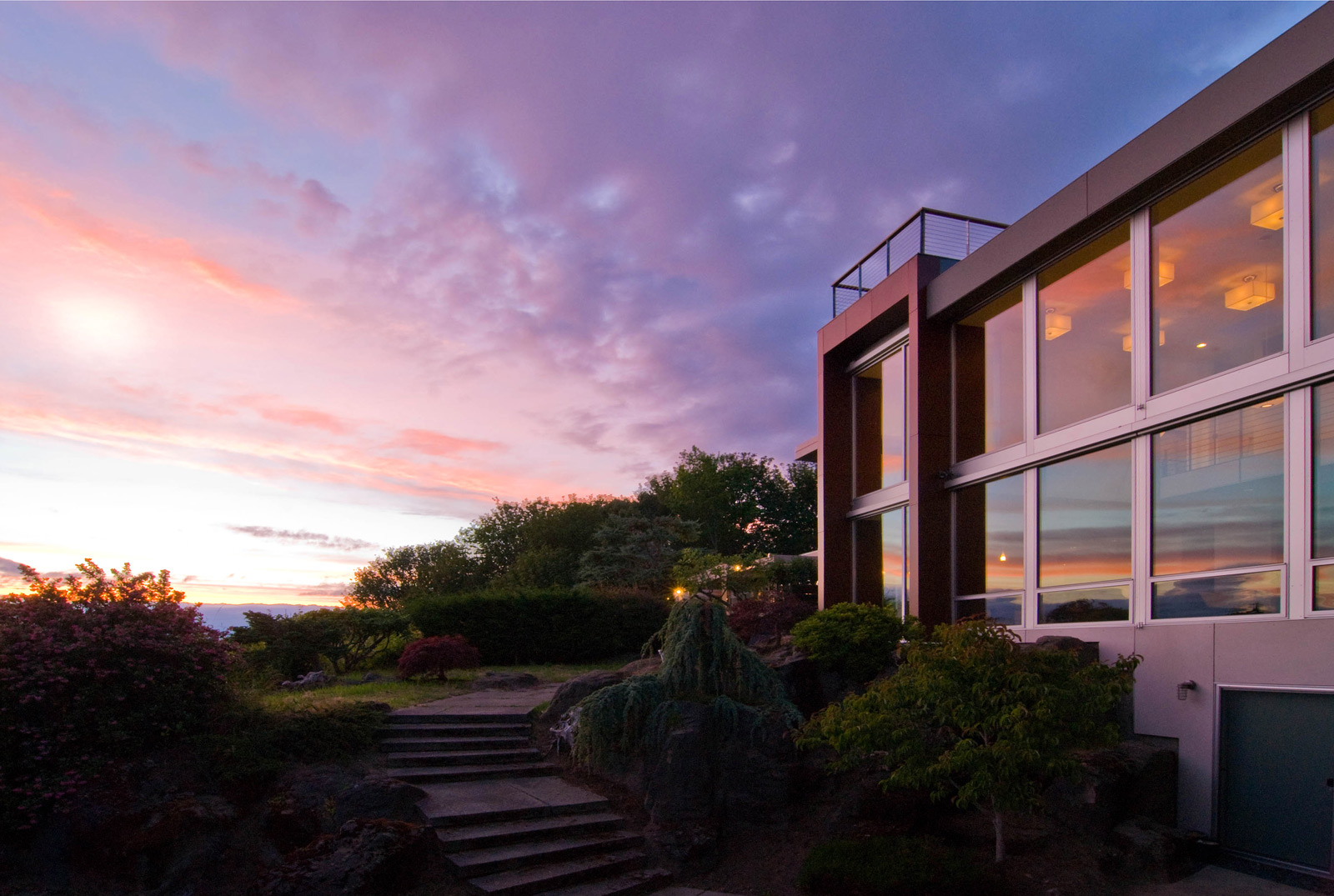
2. Use aluminum window frames.
While wood windows are excellent at meeting the energy code, they’re too costly in terms of price and maintenance. At the other end of the spectrum are vinyl windows which are the cheapest option on the market and do a great job of meeting the energy code. But the fact of the matter is that vinyl windows look like, well, vinyl. The cheap, plasticky looking profiles detract from a good modern aesthetic to such degree that we just can’t specify them -no matter how cost-effective they are. Right in the middle of the price equation are aluminum windows. Keep in mind, these are not the aluminum windows of your childhood. Modern aluminum windows are thermally broken for better insulation values and have a clean, modern profile that compliments modern design very nicely. We like to use Marlin Aluminum Windows because they keep up with the energy code and offer the product in a clear anodized or dark bronze.
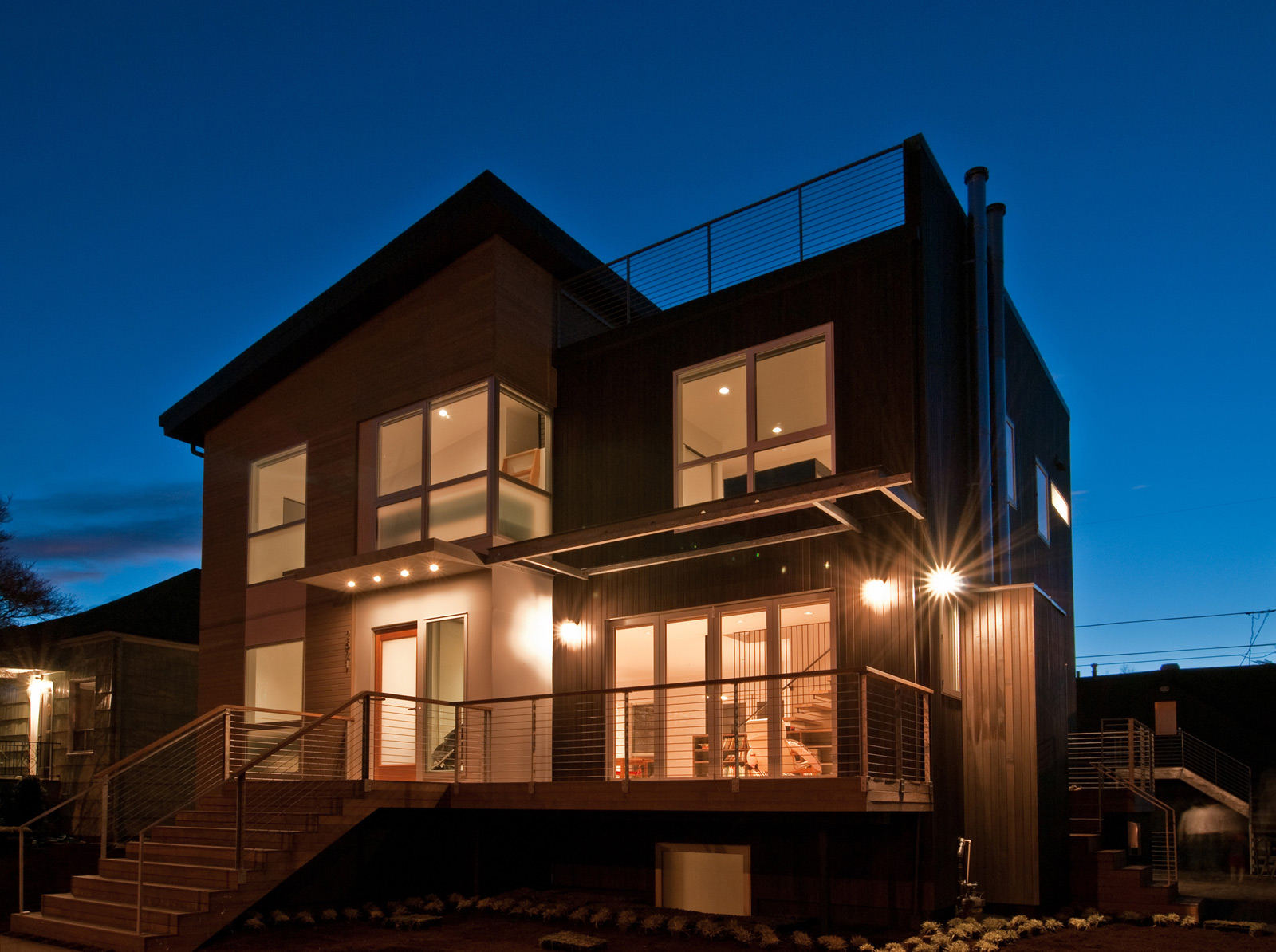
3. Use a large ratio of glass to frame.
A surprising fact of aluminum windows is that the glass typically has a better insulation value than the aluminum frame. Because of this relationship, larger panes of glass, with fewer mullions, pencil out to a better insulation value overall. Keeping the glass to large expanses is typically in line with modernism anyway and the strategy is a win-win. As a typical rule of thumb, using a maximum glass pane size of 50 square feet keeps the design cost-effective and practical in terms of installation weight.
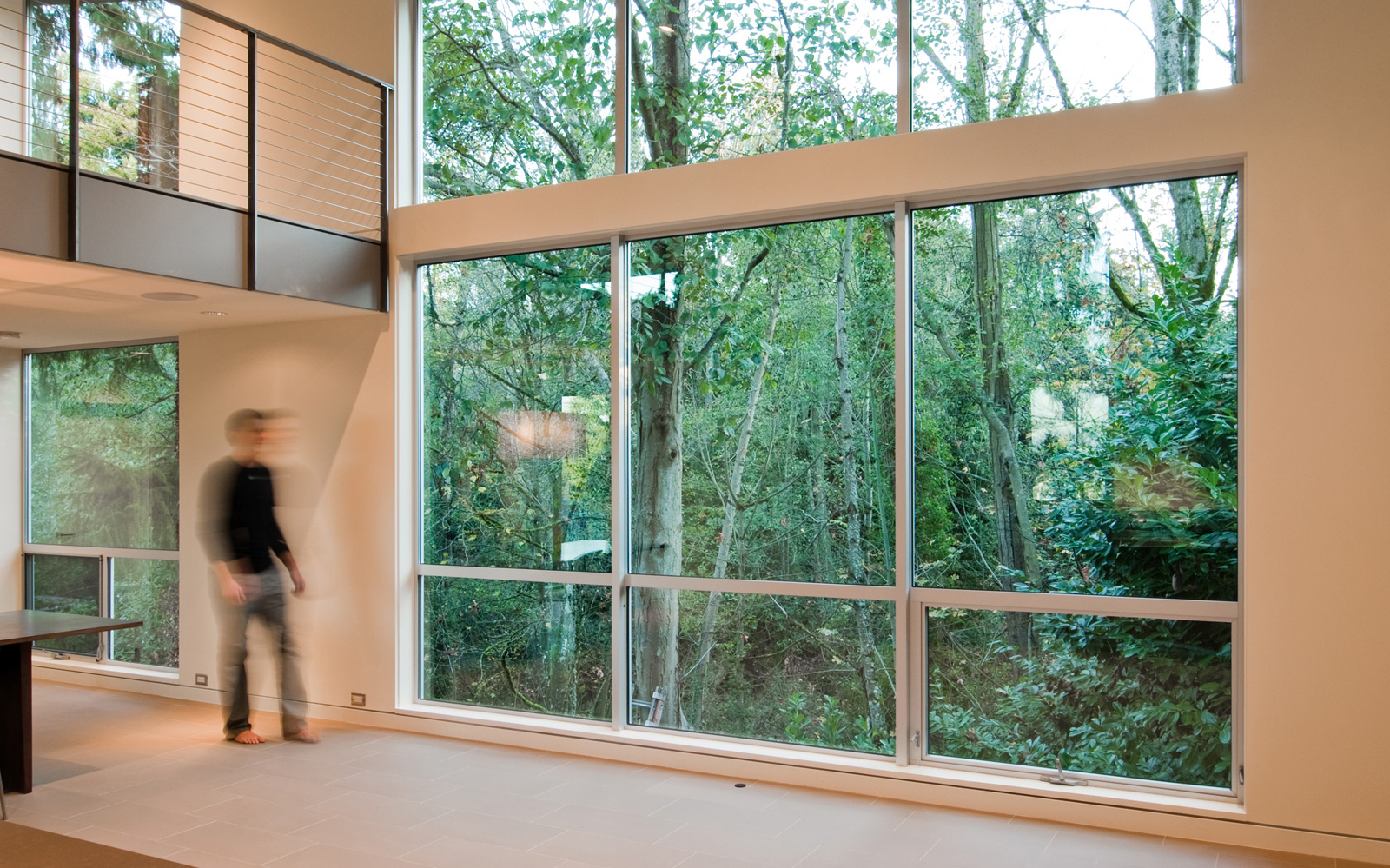
4. Use double and triple pane glazing strategically.
Good modern design should do an excellent job of locating operable windows for egress and natural ventilation. Unless the house is fully air conditioned, (i.e. not sustainable,) a calculated pattern of windows is important to promote natural air movement in the warmer months (or weeks, if you live in Seattle). The maximum sizes for operable windows are significantly smaller than fixed panes and a casement window (hinged on the side) has a maximum width of only 36” with most aluminum window manufacturers. These operable windows produce more window breaks and mullions within the overall window composition and, as mentioned in #3, this worsens the insulation value of the overall glazing. In order to balance this out, we use triple glazing at bottom rows of awning windows (hinged on top). The better insulation value of the triple-pane glazing balances out the poor insulation values caused by the frequency of aluminum mullions. The triple glazed panes also have more of a tint than double glazed panes and keeping the triple panes closer to the floor allows for a clearer view where it counts most.
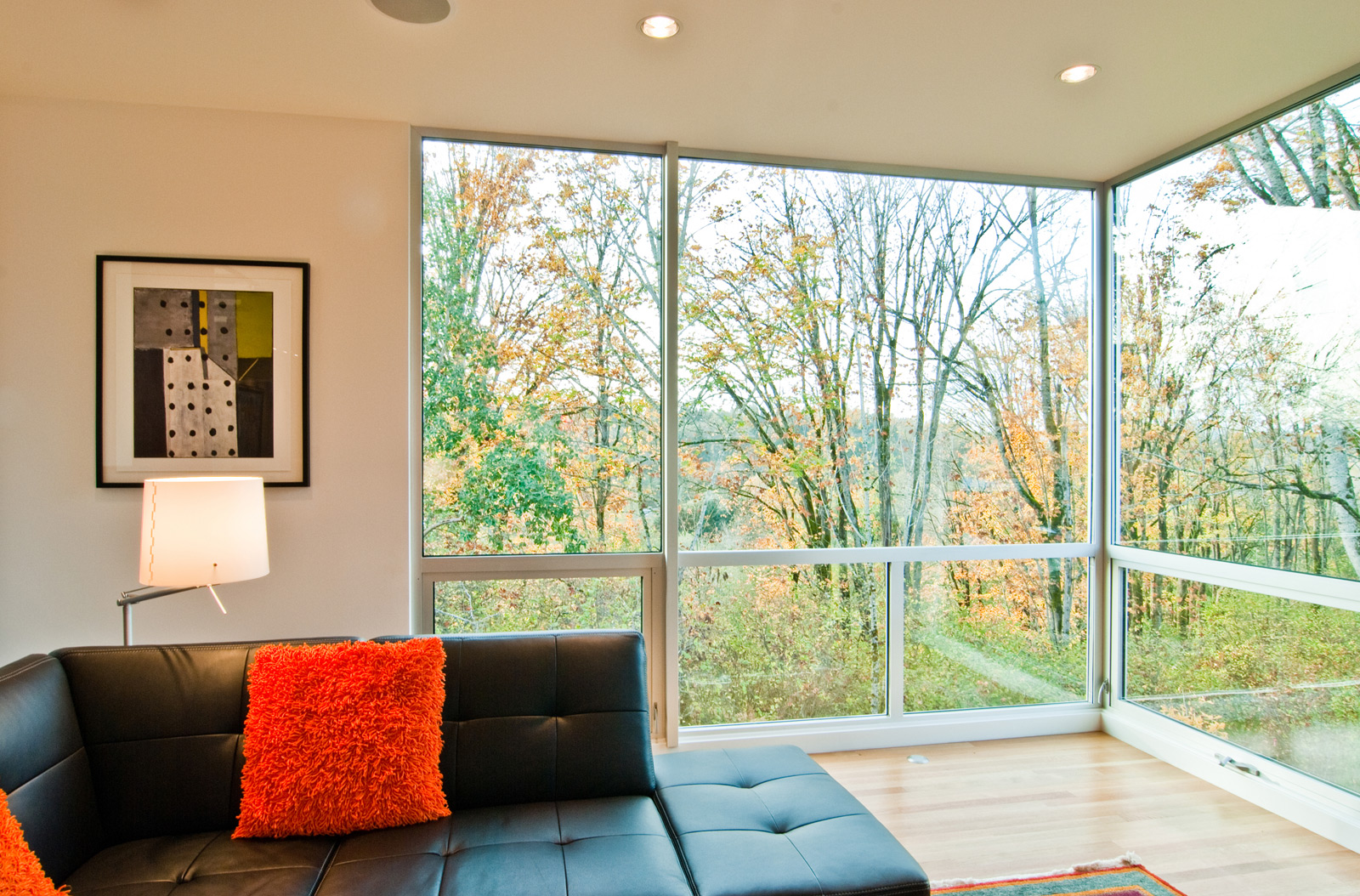
5. Mix and match.
Unconditioned areas of a home like garages and storage areas don’t need to meet the energy code. While these areas may be warmer than the outside, technically they don’t have the same value of heat to retain. These areas can utilize aluminum windows manufactured by different companies to lesser specifications which are usually cheaper. If detailed correctly, and held apart from one another, the different window packages can work in harmony together at the envelope of a house.

These 5 strategies have come in handy on our projects, helping our us meet the energy code while upholding a handsome modern aesthetic, and best of all, making sure we hit our budgets.
Cheers from team BUILD





